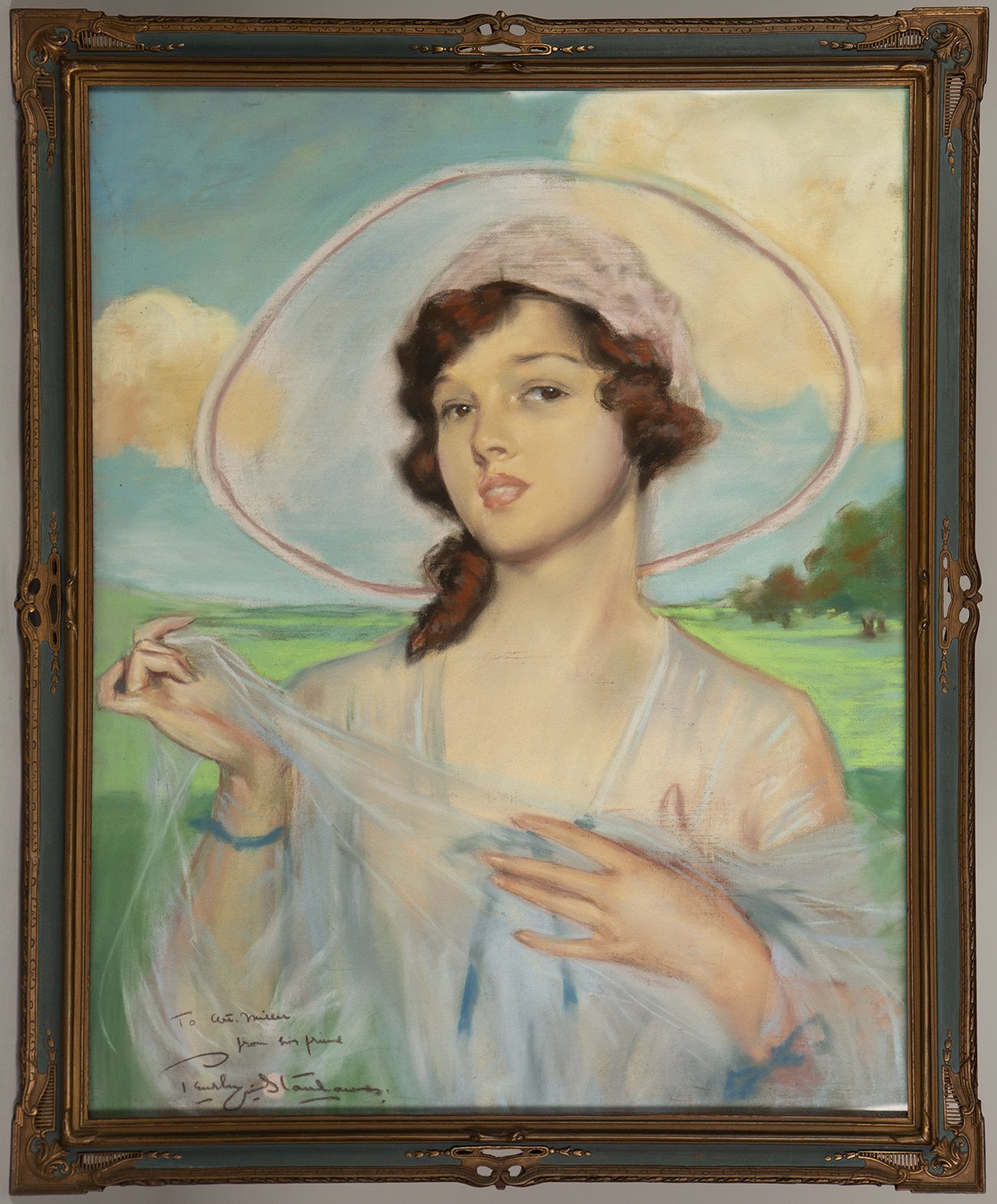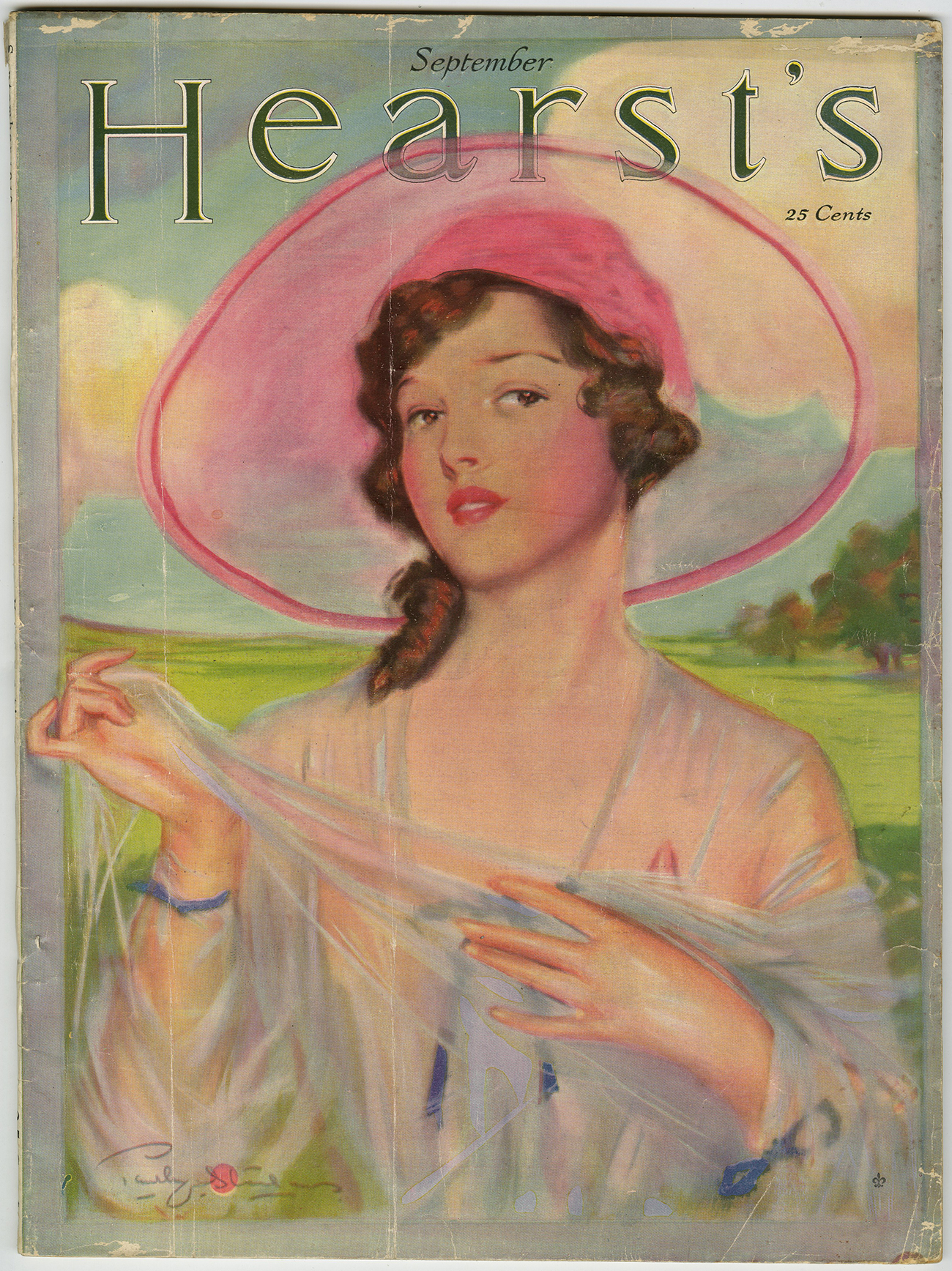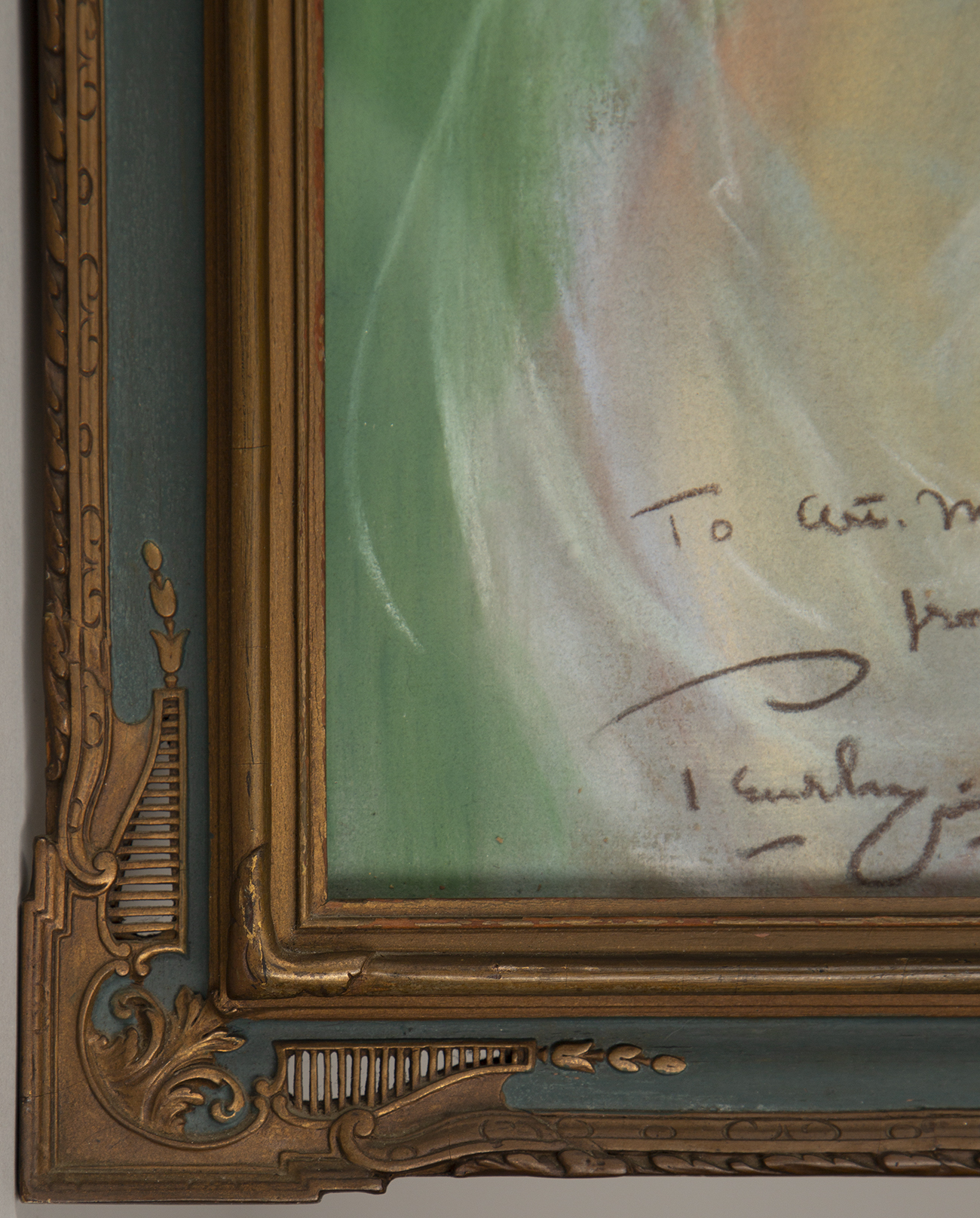
Hearst’s magazine cover art portrait by Penrhyn Stanlaws
Soft and delicate, this pastel portrait by Scottish-American artist and illustrator Penrhyn Stanlaws captures the dainty beauty of an Edwardian society girl. The fair, rosy-cheeked brunette is draped in sheer fabrics and wears a sheer pink garden hat as she takes an afternoon stroll through a vibrant green field.
This pastel was published on the cover of the September 1919 issue of Hearst’s magazine.
This is signed and notated by the artist in the bottom left corner and is handsomely framed behind glass in its original, ornate wood gesso frame that is beautifully carved and painted. The detail and craftsmanship is exemplary of the era and design.
This pastel comes from the collection of the esteemed illustration art collector Norman Platnick.

About the artist: Penrhyn Stanlaws
Penrhyn Stanlaws was born March 19, 1877 in Dundee Scotland as Stanley Adamson. He was the younger brother of another illustrator, Sydney Adamson, so he would change his name to avoid confusion.
Stanlaws’ art could be found on several magazine covers throughout the 1910’s and 20’s, including the Saturday Evening Post, The American Magazine, Collier’s, Life, Judge, The Metropolitan Magazine and Hearst’s International.
He was best known for cover-art depicting beautiful women such as the Post cover shown here. His “Stanlaws Girl” rivaled the “Gibson Girl” and was modeled on silent star Anna Q. Nilsson. In 1915, tragic early star Olive Thomas was another of Stanlaws’ subjects in the famed nude “Between Poses” which can quickly be found elsewhere online. Other early stars who posed for him included Mabel Normand and Florence LaBadie. Stanlaws would actually move to California to direct a few films in the early 1920’s.
Prior to that though, while still in New York, Stanlaws would organize a syndicate to build the Hotel des Artistes where it still stands on 1 West 67th Street. Built as a co-op, but with rental units as well, Stanlaws claimed “that the 10-floor, $1.2 million structure was the largest studio building in the world” (nytimes.com). The Hotel des Artistes was completed in 1917 and while Stanlaws planned other projects including a never completed resort in Port Washington on Long Island.
Off to Hollywood soon thereafter Penrhyn Stanlaws finds himself credited on the IMDb as director of seven films: “The House that Jazz Built” (1921) starring Wanda Hawley, four Betty Compson vehicles: “At the End of the World” and “The Little Minister” (both also 1921), and “The Law and the Woman” and “Over the Border” (both 1922), plus two Bebe Daniels films, “Singed Wings” and “Pink Gods” (both 1922), the latter of which also featured the “Stanlaws Girl,” Anna Q. Nilsson.
Penrhyn Stanlaws died in Los Angeles, May 20, 1957 in a fire said to have started when he fell asleep in a chair while smoking.


The Legacy of Norman Platnick
In his New York Times obituary, Norman Platnick’s son Will said that his father had three passions in life, his wife Nancy, spiders, and collecting.
Few individuals have the chance to leave a mark like Norm’s in even one field, let alone two. But Norm managed to be both a celebrated scientist, and one of the most influential lay historians of illustration art.
Under his imprint Enchantment Ink, Norm researched, wrote, and published collectors guides to artists like Rolf Armstrong and Earl Christy. We at Grapefruit Moon Gallery rely on these books in our work, and they are now all freely available as PDFs through the Enchantment Ink website.
Norm’s expertise was a gift, his friendship was a treasure, and his legacy is immensurable. He is missed.



